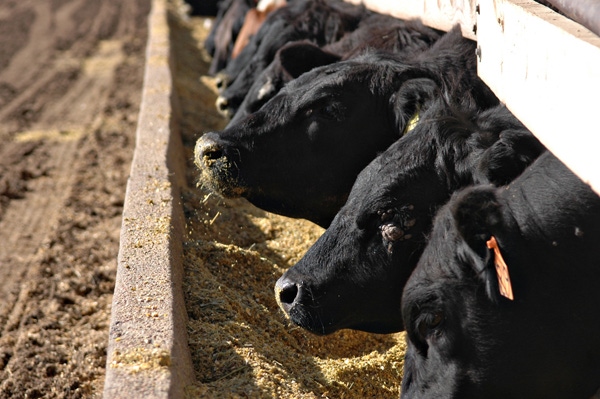RFI and your cowherd: What’s the connection?
The RFI revolution is now solidly a part of your bull selection criteria. Here’s why.

“Back in the early 60s, when my father and others started the concept of performance and measuring cattle, a lot of people didn’t like it, they didn’t agree with it. None of those people are in the business any more. They’re all gone.” So says Leo McDonnell, whose father started Midland Bull Test.
“You either performance test, you provide genetically relevant cattle, or you’re gone,” he says to fellow seedstock producers. And to commercial cow-calf producers, he has this to say: “I predict that within 10 or 15 years, if you have not incorporated these efficiency genetics in your cattle programs, you’re going to be gone, too.”
A bold statement, McDonnell says. But then again, Leo McDonnell has never backed away from bold statements.
McDonnell, who ranches in Montana and North Dakota, spoke during a GrowSafe seminar in conjunction with the recent Beef Improvement Federation conference. Joined by Matt Brown, a seedstock producer from Lodge Grass, Mont., the pair discussed why genetic feed efficiency, measured by residual feed intake (RFI), is important for cow-calf producers.
When the concept of residual feed intake first hit the beef business, the focus was on the feedyard and how breeding feed efficiency into the herd will pay at the feed bunk. And it does. But for cow-calf producers, the benefits of RFI are just as important in the cowherd.
RFI is a measure of how efficiently an animal utilizes its feed, and a negative RFI number is what you’re looking for. “If they’re eating a little more than they should, they’re a plus,” McDonnell says. “A little less, they’re a negative.” Many bull test stations and individual seedstock producers are now calculating RFI and providing that number to bull buyers.
Brown says one big benefit to RFI when selecting bulls is that it’s an independent trait, meaning you don’t have to worry about any genetic antagonisms. “You’re not giving up weaning. You’re not giving up yearling, you don’t have to give up on feet or udder structure, any of those things. You can take those cattle, reduce input costs and add value to those cattle.”
But because it’s independent of other traits, you have to study all the traits a bull offers and meld them together. A negative RFI bull can still fall apart on performance genetic traits that are important to you.
“But when you tie it in with production, it becomes the most powerful tool I’ve ever found,” McDonnell asserts. “At the same time, it allows us to reduce the appetite on our cows.”
To prove that point, McDonnell offered anecdotal evidence that backs up much of the research he’s read on RFI.
He bought a ranch in the North Dakota Badlands some years ago, which is not an easy place to be if you’re a cow. Visiting with the old-timers in the area, he was told to figure 5 round bales per cow for the winter.
“So that’s what we figured back in the late 90s. We’re down to 3 or 3 ½ round bales per cow. Just went through the worst drought I’ve ever experienced last year and one of the worst winters any of us experienced and came through with the least amount of hay and more cattle on the ranch and the cows were in the best condition ever.” Plus, breed-back was just about as good, he says.
Circling back to the beginning of the RFI revolution, when all the focus was on feed efficiency in the feedyard, McDonnell and Brown both say they see results there, as well. “We found 36% [better feed efficiency] in some steer groups. You couple that with what you can do with your cows out on grass, that’s another 20% to 30%,” McDonnell says.
“You’re talking $80 to $100 savings on the cow and another $100 to $125 on the steer. If you’ve got all your cattle bred like that, you don’t need the board. I guarantee you’ll make money.”
About the Author(s)
You May Also Like



